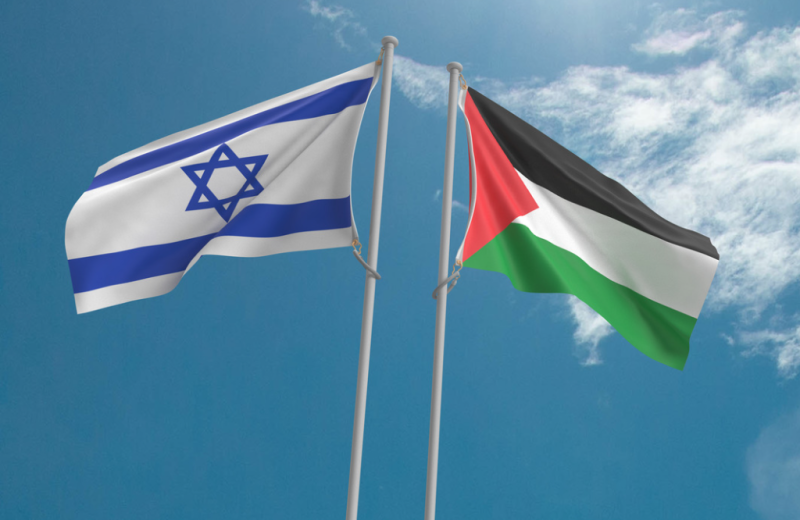 Op-eds
/ The Gaza Campaign
Op-eds
/ The Gaza Campaign
With a deal on the release of hostages and a pause in the fighting, the war in Gaza is entering a new stage. This four-day truce will see the handing over of dozens of hostages, but the pause also gives the international community an opportunity to promote stable and sustainable peace in Israel and the Palestinian territories. We are at a crossroads – and before us lies either a continuation of the conflict, or the impetus to find a permanent resolution.
Hamas’s murderous attack on 7 October shattered many longstanding convictions. It brought the Palestinian issue back to centre stage; challenged the notion that the Israeli-Palestinian conflict could be managed at a low cost; and undermined the belief that Israel could pursue integration in the Middle East while ignoring Palestinian demands. In its place, there is now a commonly held view across Israeli society that “managing the conflict” hasn’t worked, and that there instead must be a permanent resolution.
At the same time, there are reasons why management of the conflict, rather than a protracted attempt at a resolution, would suit some of the main players. The US and UK governments both face elections in 2024, and are preoccupied with the war in Ukraine due to the need for stability and lower energy prices. Meanwhile, Arab leaderships are dealing with a range of internal challenges, and relative calm in the Palestinian arena may be enough to appease them. Hamas would be happy to continue to struggle with Israel without facing a diplomatic process that could provide legitimacy to the Palestinian Authority, strengthen moderate politicians and ultimately undermine its power.
Netanyahu would also be content with managing the conflict, as any attempt to solve it would threaten the stability of his coalition and the continuation of his rule. His coalition, and consequently his leadership, relies on the support of the extremist settler movement. This faction adamantly opposes any compromises with the Palestinians and viewed Hamas as an “asset”, because its existence hinders the possibility of a peace process.
It is therefore easy to imagine both sides sliding back into managing a low-intensity conflict. Under this scenario, the IDF would remain in Gaza for an extended period, continuing the fight against Hamas. The conflict would be confined to the Gaza Strip. The public would adjust to it. It would no longer be news, and the world would move its attention elsewhere – until the next eruption occurs in Gaza, the West Bank or in Lebanon.
Alternatively, absent the will or the ability of the Israeli government and the Palestinian Authority to bring about meaningful change, the international community, led by the US, could push toward a resolution of the conflict. To achieve that, the international community needs to promote several key steps.
First and foremost, it must define the ultimate goal – which should be to commit to the implementation of the two-state solution and an embrace of the Arab Peace Initiative – and a timeline within which to achieve it. This can be done by via a resolution of the UN security council (UNSC). To overcome the tension between the US and Russia, it may require a representative of the Arab world such as the UAE to champion the proposal in the UNSC. If this path is blocked, a regional peace summit convened by the US would be a satisfactory alternative.
Secondly, and of utmost importance, it is vital that Joe Biden leads the recognition of a Palestinian state by the US and other major countries, as part of a comprehensive diplomatic process. Such a step will ensure that there is no turning back. It will change the dynamic in Gaza and in the West Bank, making it difficult for Israel to continue its creeping annexation, and strengthen the Palestinian Authority against Hamas. Furthermore, such a move could boost Biden electorally, helping him to potentially regain support that he lost when backing Israel’s operation in Gaza.
Knowing that the creation of a Palestinian state is the endgame will enable the third critical step to be taken by the international community: the formulation of an interim international-Palestinian regime. With a clear and recognised goal of achieving the two-state solution, an international force drawn from Arab and western countries could then be recruited to gradually replace the IDF in Gaza and take responsibility for security and development efforts. If the path to a two-state solution is defined, European and Arab countries will agree to invest in building the physical and institutional infrastructure of what Biden called a “revitalised Palestinian Authority”, leading the way to a Palestinian state. No one wants to continue pouring money into Gaza if the strategy of managing the conflict continues and its infrastructure needs to be rebuilt every few years after another round of war.
The absence of worthy leadership in Israel and the Palestinian territories means that securing peace falls on the shoulders of Biden and the international community. He must step up and deliver.
The article was published on the Gurdian on November 23rd.


